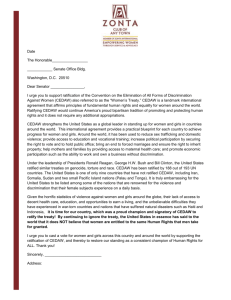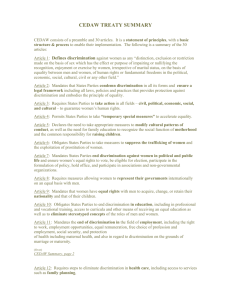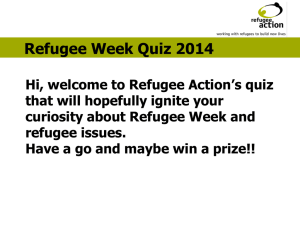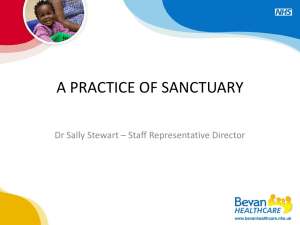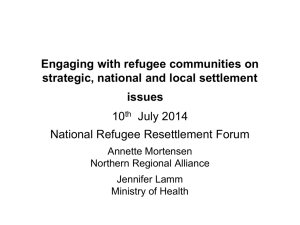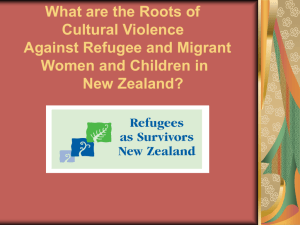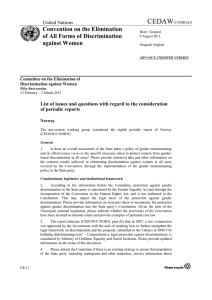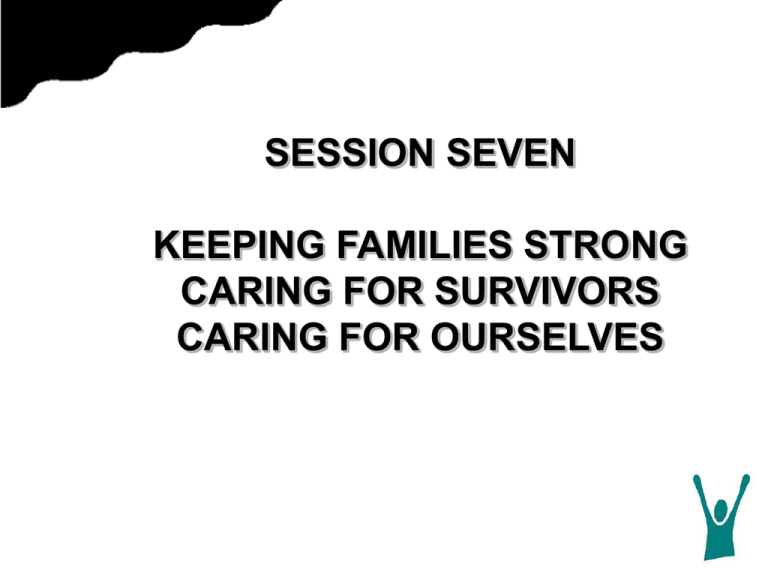
SESSION SEVEN
KEEPING FAMILIES STRONG
CARING FOR SURVIVORS
CARING FOR OURSELVES
HEARING STORIES
“Thank you, thank you, thank you – you are the first person who
has let me tell my story. People do not want to listen – they tell
me it is better to forget about it. How can I forget? It is in my
head the whole time and I dream about it every night!!”
(Refugee woman from Sudan, Pittaway & Bartolomei, 2003a).
“The tendency for individuals, including health professionals,
to withdraw from survivors of violence has been well documented…
The medical or psychiatric interviewer is often emotionally
unprepared to listen to the horrifying experiences of the
survivor of torture”
(Goldfield, Mullica, Passavant, & Forgone, 1988, in Gorman, 2001, p.2725)
57
“We don’t talk about it”
When working with traumatised refugees, workers often have to walk a tightrope of
cultural issues. Common sentiments expressed by people from CALD communities
are:
“ We don’t talk about things like that in our culture”
“It doesn’t happen in our culture”
“That is quite unacceptable in our culture”
“Women are not allowed to admit to that in our culture”
“Older women won’t talk to you if you ask questions like that”
The power of multiculturalism is so great that it is often difficult for workers to
challenge statements such as these.
58
CEDAW: The convention to eliminate
all forms of discrimination against women
Article 1
For the purposes of the present Convention, the term
"discrimination against women" shall mean any distinction,
exclusion or restriction made on the basis of sex which has the
effect or purpose of impairing or nullifying the recognition,
enjoyment or exercise by women, irrespective of their marital
status, on a basis of equality of men and women, of human
rights and fundamental freedoms in the political, economic,
social, cultural, civil or any other field.
59
CEDAW
Article 5
(a) States Parties shall take all appropriate measures:
to modify the social and cultural patterns of conduct
of men and women, with a view to achieving the
elimination of prejudices and customary
and all other practices which are based on the
idea of the inferiority or the superiority of either of the
sexes or on stereotyped roles for men and women;
60
CEDAW
Article 16
States parties shall take all appropriate measures to eliminate
discrimination against women in all matters relating to marriage and
family relations and in particular shall ensure, on a basis of equality
of men and women:
(a) The same right to enter into marriage
(b) The same right freely to choose a spouse and to enter
into marriage only with their free and full consent;
(c) The same rights and responsibilities during marriage and
at its dissolution
61
CEDAW
Article 16
(d) The same rights and responsibilities as parents, irrespective of their
marital status, in matters relating to their children; in all cases
the interests of the children shall be paramount;
(e) The same rights to decide freely and responsibly on the number
and spacing of their children and to have access to the information,
education and means to enable them to exercise these rights;
(f)
62
The same rights and responsibilities with regard to guardianship,
wardship, trusteeship, and adoption of children, or similar
institutions where these concepts exist in national legislation;
in all cases the interests of the children shall be paramount;
CEDAW
Article 16
(g) The same personal rights as husband and wife, including the right
to choose a family name, a profession and an occupation;
(h) The same rights for both spouses in respect of the ownership,
acquisition, management, administration, enjoyment and
disposition of property, whether free of charge or for a valuable
consideration.
63
Do Children also have Human Rights?
Children are protected by the United Nations Convention on the Rights
of the Child.
FOR EXAMPLE:
Article 10
Families who live in different countries should be allowed to move
between those countries so that parents and children can stay in contact
or get back together as a family.
Article 22
Children who come into a country as refugees should have the same
rights as children born in that country.
Article 31
All children have a right to relax and play and to join in a wide range of
activities.
64
Strategies for Working
with Refugees
Use of appropriate and sensitive language and culturally
acceptable images
Prevention and education sessions on Domestic Violence for
men, women and youth to assist in transforming community
attitudes
Effective use of media campaigns
Empowering women with information and skills to reduce
their vulnerability to domestic violence
Partnerships with ethno-specific social/community workers
and specific Domestic Violence services
Identify and use early intervention/mediation methods and
improve availability and use of counselling services
Involve community, especially elders, in problem solving
65
Non traditional ways of
Working with women
66
Story Circles
Massage
Art and craft therapy and projects
Story Boards
Community Projects
Dance
Poetry
STORY BOARDS
Based on one of the women in the case studies presented, prepare
six pictures which show the following:
67
1.
What is her current circumstance? (eg she is being beaten in the home)
2.
What are her immediate physical and emotional needs? Who can help?
(eg medical treatment, support etc)
3.
What is the best way for her to achieve safety and security immediately? How
will you guarantee this does not isolate this woman from her family,
community, etc
4.
Now she is in a position of safety and security and not isolated what does she
need to help her towards full participation in society?
5.
Given the knowledge you have obtained in this session, how can this
refugee woman best gain what she needs in the long term to facilitate her
full participation in society?
6.
What is the best outcome for this woman and her family?
Refugee
Woman
RAPE
VICTIM
POOR
FRIGHTENED
VICTIM
VULNERABLE
SINGLE PARENT
DEPENDENT UPON CHARITY
MALNOURISHED
NON ENGLISH SPEAKER
68
REFUGEE
WOMAN
TEACHER
COMMUNITY
LEADER
PROTECTOR
WIFE & DAUGHTER
MOTHER
STRONG
HEAD OF FAMILY
MUSLIM
69
Caring for Ourselves
“Repeated exposure to the atrocity that one
human commits against another can result in
experiences of terror, rage and despair on the
part of therapists” (Regeher & Cadell, 1999, p.56).
70
“I just cannot bear to hear one
more story – I will burn out and
leave. I make my colleagues see
all the Women at Risk – I just
cannot bear more horror”
(Pittaway & Bartolomei, 2004).
Secondary or Vicarious
Traumatisation
Many domestic violence workers experience secondary
traumatisation.
Working with refugee women who experience domestic
and family violence can increase the risk for workers.
Refugee women might disclose previous torture and
trauma as well disclosing the current domestic violence
they are experiencing
71

